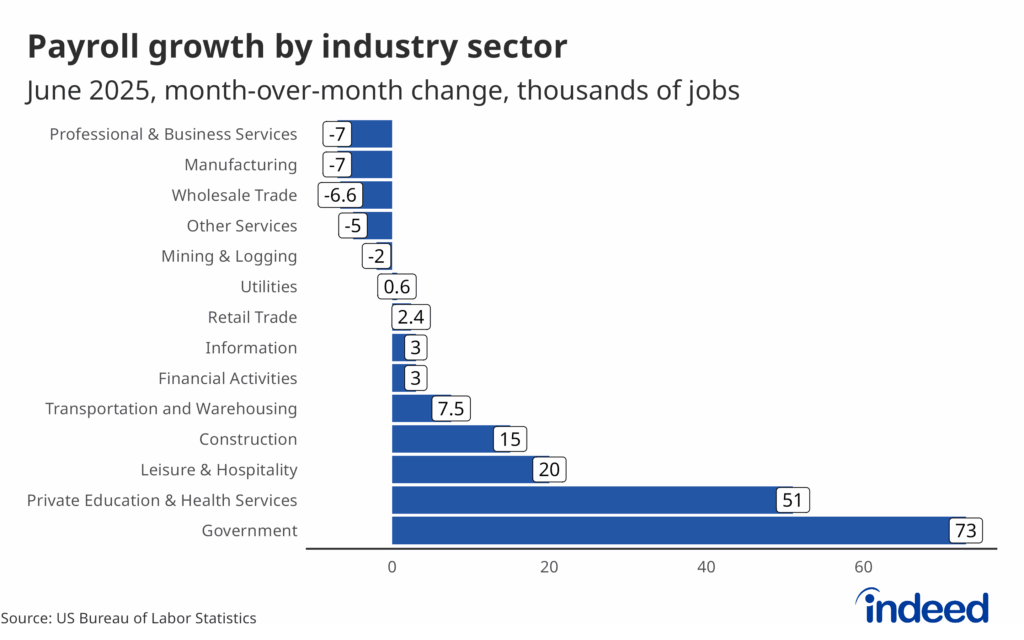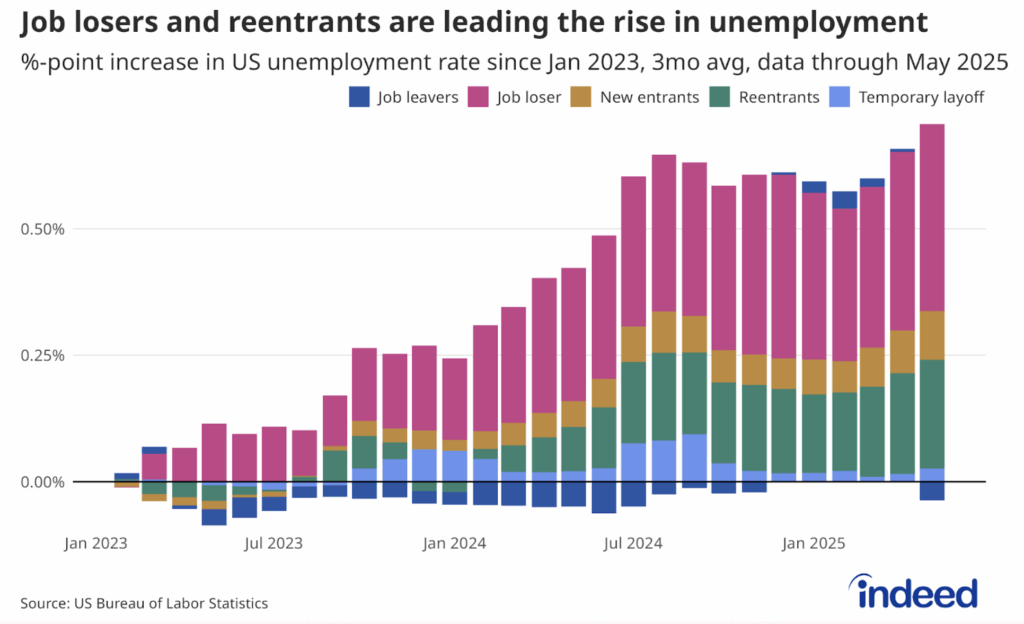Key points:
- US employers added 147,000 jobs in June and the unemployment rate ticked down to 4.1, according to the Bureau of Labor Statistics.
- Job gains continue to be concentrated in a few industries, with healthcare & social assistance and state/local government adding 94% of the jobs in June.
- Preliminary job growth from April and May was revised upward by a combined 16,000 jobs.
The US job market continues to largely stand tall and sturdy, even as headwinds mount — but it may be a tent increasingly held up by fewer poles. The headline job gains and surprising dip in unemployment are undoubtedly good news, but for job seekers outside of healthcare & social assistance, local government, and public education, the gains will likely ring hollow. Employment growth outside of those marquee industries has been anemic at best, and the duration of unemployment for the typical unemployed worker seeking a job continues to creep up. This is not a bad report, but it might not be as solid as it seems on the surface. There are real weaknesses in the market — including concentrated job gains, slowing wage growth, and falling participation — that have persisted for months, and there are scant signs of those concerns fading anytime soon.
Payroll jobs grew by 147,000 in June, and the three-month moving average of job gains now stands at 150,000, slightly less than the pre-pandemic 2019 average of 166,000. Healthcare & social assistance and state/local government sectors accounted for the lion’s share of growth in June, accounting for 94% of all net new gains.
The unemployment rate ticked down to 4.1%, but unemployment duration increased from an average of 21.8 weeks to 23 weeks. Still, the rate has been remarkably steady in the last year, bouncing in a narrow range of 4.0% to 4.2% The share of workers between the ages of 25 and 54 engaged in the labor market, also called the prime-age labor force participation rate, ticked up slightly to 83.5% in June but remains below it’s September 2024 peak of 83.8%.
There are real forces acting as stabilizing stakes keeping the labor market tent anchored, including demographic shifts likely to keep labor demand high and supply tight, and an ongoing reluctance among employers so far to engage in large-scale layoffs. Those foundations are important and are likely to keep any spikes in unemployment or widespread job losses muted; however, they should not be taken for granted. Even well-staked tents can collapse when the wind shifts hard enough.




